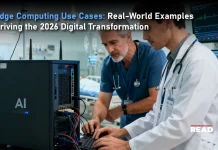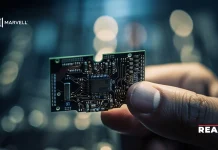Drugs have been used to treat diseases, enhance health, and lengthen the lives of both humans and animals for ages. When compared to the mixtures of plants and other ingredients discovered in ancient times, medications today have undergone significant evolution. The methods by which these pharmaceuticals can be administered to patients have advanced with the science of drugs and medicine to become the well-studied and tested chemical compounds that pharmaceutical companies manufacture today.
But until recently, there was limited discussion of how patients would actually receive these treatments. The landscape of medicine effectiveness has been significantly changed by improvements in drug delivery, and even more, significant changes are projected in the near future. Continue reading to see how, in tandem with medical breakthroughs, drug delivery technologies have evolved to become more complex and innovative.
Drug Delivery: The World of Transporting Treatments Safely and Effectively
The act of delivering medication or other pharmacological compounds to produce a therapeutic effect is referred to as drug delivery. Due to the discovery that a medicine’s efficacy can be affected by how it is delivered, drug delivery has grown in importance within the pharmaceutical business over the past few decades. Hence, it is possible to optimize the drug within the body by identifying the delivery method that is most appropriate for a given treatment.
How Do We Get Medications Where They Need to Be? Breaking Down the Science of Drug Delivery
A drug delivery system is a kind of device or formulation that present a drug to the body for absorption as well as administration. To provide a therapeutic dose of medication while boosting safety and effectiveness, drug delivery systems are used. They do this by managing the location, rate, and timing of a specific drug’s release into the body.
Throughout the past 60 years, drug delivery systems have seen significant change. Technology for drug delivery has advanced significantly, particularly over the past 12 years. Transdermal patches are one example of a sophisticated pharmaceutical delivery technology that can deliver a drug more precisely to a specific place, which typically results in simpler, more precise, and less frequent dosing. Moreover, these drug delivery techniques may lead to medicine absorption that is more in line with the site and mechanism of action. Various patients need to be led to the development of other drug delivery systems that are utilized in both medical and home care settings, and researchers are now working to create new ones.
We may anticipate the development of increasingly more complex and accurate drug delivery systems as the field of drug delivery technology has advanced rapidly. By 2030, the global market for drug delivery technology is projected to increase significantly and reach a value of USD 71.7 billion, according to Extrapolate’s projections. The field of medicine could be revolutionized by these technologies, which have the power to alter the way we view drug delivery.
How do Drug Delivery Devices Revolutionize Medical Treatment?
The physical agents of the drug delivery system are the drug delivery devices. People engage with a wide range of technologies that fall into this category on a daily basis. Modern pharmaceuticals are developing novel drug delivery systems and combination products for a variety of purposes, including enabling patients to self-administer some prescriptions at home, which can aid in adherence to prescribed regimens. The market for combination products is changing as a result of modern technology and medicine. Any combination devices, particularly drug-device combinations, must follow strict regulations.
In order to give patients additional oversight when taking prescriptions at home, more and more drug delivery systems are being created as electromechanical devices connected to applications due to engineering developments. Some of these medical apps may use feedback from the device to keep tabs on how much medication is being taken and how frequently, remind patients to take their medications and connect physicians to this data so they can keep an eye on patient compliance. The drug delivery devices on which so many patients rely must abide by legal standards. All drug delivery technologies, including those using needle-based, aerosol, and needle-free injectors must adhere to tight regulations.
Which Method Works Best? A Look Into Diverse Types of Drug Delivery Technology
According to the mode of administration, drug delivery systems can be oral, injectable, ocular, pulmonary, topical, implantable, nasal, or transmucosal. Since it is more affordable, employs a simpler dose form for large-scale manufacture, and permits improvements such as extended-release and smaller tablet sizes for easy swallowing, the oral route has historically been the most practical and popular method of drug delivery.
As alternatives to the parenteral route, the nasal and pulmonary routes have also become more significant over time, particularly for peptide and protein therapies.
How Does Drug Delivery Exactly Function?
A drug or medication is supplied by drug delivery so that the body can absorb it. Yet, not all delivery methods are made equal. Our understanding of the physiological barriers that might render drug delivery ineffective, particularly in the field of how medications pass through cells and tissue, has greatly benefited from the work of biomedical engineers. Also, these scientists and engineers have made a significant contribution to our understanding of how drug delivery functions.
Modern systems and devices for drug delivery are intended to do more than just deliver a drug to the body. For instance, certain systems are intended to provide medication locally as opposed to systemically. A lidocaine injection prior to a dental operation or the application of a topical ointment to a skin rash are two common localized delivery methods. There are alternative ways to receive localized drug delivery, however, some medications can only be administered systemically. Drug administration techniques have developed in the modern era to accommodate various patient needs.
Wrapping it Up
Profitable opportunities have been created for the pharmaceutical drug delivery market due to increased awareness of novel pharmaceutical drug delivery technologies, supportive government initiatives, and rising investment in the research and development of innovative products and drug delivery platforms.
Understanding medication delivery methods and technology will help to reduce the likelihood of unintended side effects or late-stage failures during clinical trials. A better understanding of medication distribution, pharmacokinetics, and other related markers would also enable clinical trial drug delivery with less unintended exposure to other organs.
To meet the demand for advanced drug delivery systems, a number of drug delivery technologies, including prodrugs, polymeric drug delivery, targeted drug delivery, implants, and intrauterine devices, are constantly developing.




